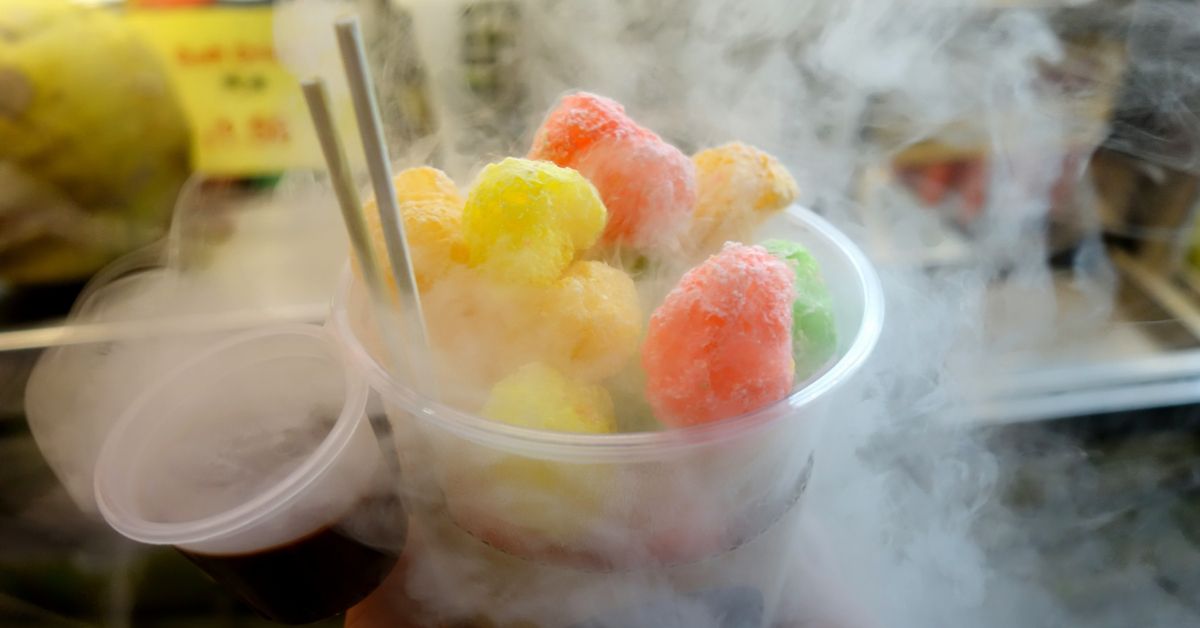On 25 July 2018, Jacksonville, Florida, mother Racheal Richard McKenny posted a warning on Facebook about an emerging food trend called "Dragon’s Breath" (a cup dessert comprising corn crackers, meringue, and puffed cereal and doused in liquid nitrogen) which she had allowed her son Johnny to try on a trip to the mall:
Johnny, who Racheal said has a history of mild asthma, was taken to a nearby fire station and then transported to a hospital and given an epinephrine shot. The cause of Johnny's distress was the nitrogen gas from the Dragon’s Breath dessert, a doctor told her.
Local news reported that the kiosk serving Dragon’s Breath at the mall in Jacksonville had now been updated to include an “allergy and asthma warning.”
This warning does not mean that an allergy to nitrogen gas caused Johnny's reaction, but more likely that the physical properties of the gas were to blame. Liquid nitrogen has a boiling point of -320ºF, meaning exposure to room temperatures will turn it into a very cool vapor. Rapid exposure to cold air, which could occur of one inhaled a large amount of the gas, can trigger asthmatic reactions, especially in children. In such cases, a person’s bronchial tubes can spasm or react by filling with mucus, restricting airways.
This was not the first public controversy for the “trendy” food, which burst onto the scene in the Philippines and in South Korea two years ago before spreading rapidly across the world thanks to its social media friendly nature.
In 2017, a Pensacola Florida woman reported that her 14-year-old granddaughter suffered a chemical burn from handling the treat. Other similar events have been reported across the world.
“Liquid nitrogen is what’s used by dermatologists to burn things off skin so we know it can be destructive to tissue,” Dr. Reed Caldwell, assistant professor at Ronald O. Perelman Department of Emergency Medicine at NYU Langone Health, told the Today show.
The Pensacola Fair issued a statement suggesting that most cases of Dragon’s Breath do not end in injury — “The vendor has sold thousands of the dessert product in the past week and has had two reported cases of injury,” it read, arguing that the injuries occurred in cases where people who did not follow the instructions:
Grab it from cup holder.
Use bamboo stick to eat.
Blow 3 times or more.
Chew it and crush it.
Do not touch/drink the liquid in the bottom of the cup.
“I should have known better, but it did not occur to me that this food could have this effect,” Racheal McKenny said in her post. “Please don’t make the same mistake I did.”
